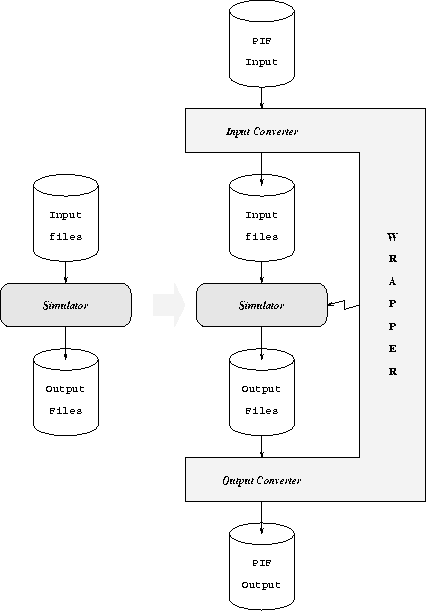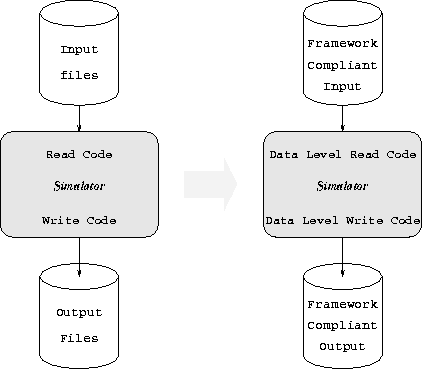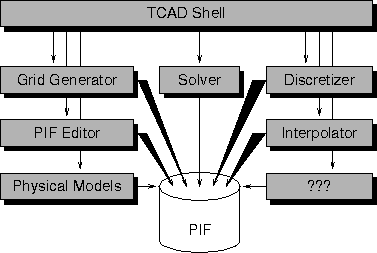2.1.1 Tool Integration




Next: 2.1.2 Data Flows
Up: 2.1 General Principles
Previous: 2.1 General Principles
Since not all available tools and simulators are explicitly designed to work
inside a TCAD framework, compatibility with external TCAD tools must be
ensured by facilitating their migration into the framework through the use of
appropriate data level concepts. These concepts relate to tool integration
methodologies and mechanisms available in a TCAD framework.
Tools available in a TCAD framework may be divided into two groups:
- Conventional Tools
- These tools are classical standalone tools
(``point tools'') often written long before the TCAD system itself
existed. They employ their own specialized file formats, since they have no
need to cooperate with other tools or a framework. Therefore they usually have
their own pre- and postprocessing facilities (e.g. for grid generation and
visualization) and solve isolated design problems.
- Framework Tools
- These tools are explicitly designed to work within
the framework, and are written when the framework either exists already or is
engineered in parallel. They rely heavily on framework services, and the more
of those services they use, the tighter they are integrated into the framework.
The classical conception of a tool being an executable file is no longer valid
for framework tools, which may be realized as an advanced framework library or
even a single function.
For a conventional simulator, two methods of integration can be applied:
- Wrapping
- This method integrates a conventional tool by running a
conversion program before and after running the tool itself. The program
performing the conversions and controlling the simulator is then called the
wrapper. There is no need for the source code to be available, since the
simulator itself remains unchanged, and just the input and output files are
converted to TCAD compliant data (PIF, in the case of
VISTA). Fig. 2.1 depicts this integration method. The advantages of
this integration method are that there is no need to change the simulator
itself. Therefore this method can be applied to any simulator whose executable
and data format descriptions are available. However, one drawback is that
any change in data formats involves changing the wrapper. Additionally, if the
conversion process is time and space consuming, it may seriously affect
overall simulator performance in the framework.
- Direct Integration
- Through substituting (or augmenting) the
simulator's input and output code with the TCAD system's data level library
calls, the simulator will directly read and write framework compliant data.
The advantage is that this simulator will then behave like a native framework
tool without any performance drawbacks through conversion. A prerequisite is
that the source code of the simulator has to be available, and that a suitable
data level interface is provided by the framework for the programming language
the simulator is coded in and for the data structure the simulator uses.
Fig. 2.2 shows how a simulator is directly integrated into a
framework.
Fig. 2.3 shows an integration method which is applicable for modern or
newly developed simulators rather than conventional ones. The simulator's
functional modules are augmented with PIF input/output routines and work as
separate standalone tools with well-defined functionality in the environment,
allowing tool developers to rely on a number of already proven and tested
modules and concentrate on their particular tool design task. The tool
developer will no longer have to design data input/output modules, geometry,
grid and attribute manipulation routines, and graphic output modules. Using
the framework services he can directly develop a dedicated module fitting into
the environment like an additional brick in a box-of-bricks system.

Figure 2.1: Simulator integration by wrapping

Figure 2.2: Direct simulator integration

Figure 2.3: Total simulator integration by splitting into functional
modules




Next: 2.1.2 Data Flows
Up: 2.1 General Principles
Previous: 2.1 General Principles
Martin Stiftinger
Tue Nov 29 19:41:50 MET 1994











